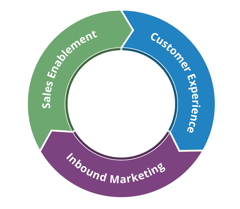In today's highly competitive marketplace, the success of a business often depends on its ability to deliver the right message to the right audience. But how can you ensure that your marketing efforts are targeted and effective? Enter the 3 foundations of an effective marketing strategy: Segmenting, Targeting, and Positioning (STP). Let's dive deeper into these 3 concepts and discover why they are fundamental to crafting a winning marketing strategy.
1. Segmenting: Identifying Your Audience Clusters
Imagine you're standing in a room full of diverse individuals. While there are many people, not all have the same preferences, needs, or interests. Similarly, the market is filled with heterogeneous consumers, and understanding these differences is crucial. That's where segmentation comes into play. Segmentation involves breaking down a broad market into subsets of similar consumer characteristics. These can be based on various criteria:
- Demographic Segmentation: Classifying based on age, gender, income, occupation, etc.
- Geographic Segmentation: Dividing by region, country, city, or even neighborhood.
- Psychographic Segmentation: Differentiating based on lifestyle, personality, or values.
- Behavioral Segmentation: Focusing on product usage rate, brand loyalty, or readiness to purchase.
The key is understanding that not all consumers will respond similarly to your marketing efforts. By identifying these distinct groups, you can tailor your approach to resonate more strongly with each.
2. Targeting: Choosing Your Market Segment
Once you've identified different segments within your market, the next step is to decide which segments you want to pursue - this is called targeting. Selecting a target market requires evaluating the attractiveness of each segment. This decision should be based on several factors:
- Segment Size and Growth: Is the segment substantial enough to be profitable? Is there potential for future growth?
- Competitive Landscape: How many competitors are there in this segment? Can you differentiate your offering?
- Alignment with Business Objectives: Does catering to this segment align with your long-term business goals and resources?
- Potential for Profit: Not just size, but will this segment be profitable in the long run?
Spreading your resources too thin over multiple segments might dilute your efforts. Focusing on a niche or a few select segments can lead to better-tailored offerings and more effective marketing campaigns.
3. Positioning: Crafting Your Unique Value Proposition
Once you've chosen your target segment(s), you must determine how you want to be perceived in the marketplace. This is where positioning comes into play. Positioning is about defining how you'll differentiate your product or service from competitors and establishing a unique space in the target audience's minds. It's essentially the value proposition you communicate. For effective positioning:
- Understand Consumer Needs: Your positioning should address your target audience's specific pain points or desires.
- Analyze Competitors: Knowing what others in the market offer helps you find gaps or areas where you can shine.
- Craft a Unique Value Proposition (UVP): Your UVP should clearly communicate the unique benefits and features of your offering.
All marketing communication, from advertisements to packaging, should consistently echo this positioning to build a strong brand identity.
Incorporating STP into Your Marketing Strategy
Segmenting, targeting, and positioning should not be one-off exercises but integral parts of your ongoing marketing strategy. As markets evolve and consumer preferences change, revisiting and revising your STP approach will ensure that you remain relevant and competitive. Benefits of the STP approach:
- Enhanced Customer Focus: By understanding distinct market segments, businesses can design products or services that cater specifically to the needs of these groups.
- Optimized Resource Allocation: Targeting allows businesses to focus their resources on the most promising segments, leading to better ROI.
- Stronger Branding: Positioning helps build a unique brand identity that resonates with the target audience.
A well-defined STP strategy is the backbone of effective marketing. By segmenting your audience, targeting the right segments, and positioning your brand effectively, you can ensure that your marketing efforts are efficient, impactful, and driving business growth.
Need help getting started? We invite you to schedule an inbound marketing consultation where we can discuss your current digital marketing initiatives to make sure they're a success.


.png?width=80&height=80&name=diamond-badge-color%20(1).png)
__Square.png?width=250&height=250&name=Marketing_Hub_(1)__Square.png)




.png?width=250&name=diamond-badge-color%20(1).png)
